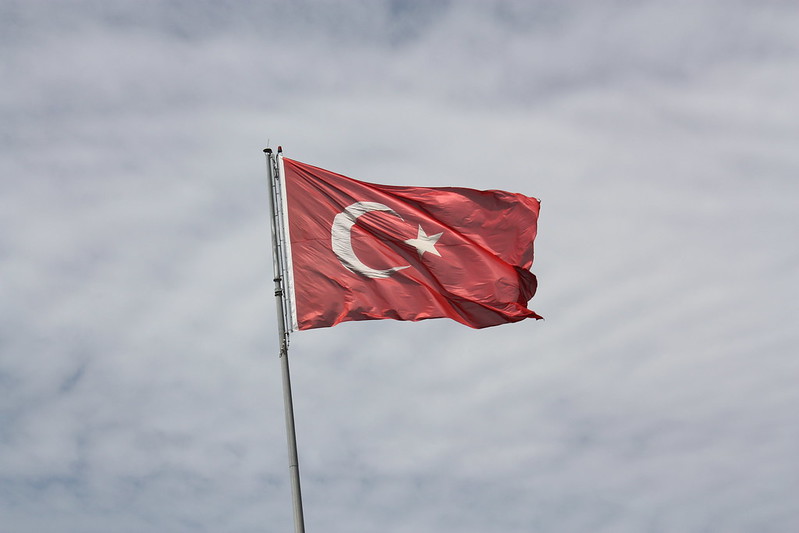Turkey’s plan to resettle Syrian refugees in the country’s northeast is not motivated by the admirable goal of facilitating a safe return of these refugees to their homes. Rather, Turkey aims to fundamentally alter the demographics of northeast Syria’s Kurdish regions.
In August, Turkey threatened to invade northeast Syria to remove the US-allied anti-Islamic State Kurdish People’s Protection Units (YPG) group from the border. This prompted the US to immediately begin establishing a joint “safe zone” in northeast Syria with Turkey to arrange a YPG withdrawal from the border in order to placate Ankara.
In early September, Turkish President Recep Tayyip Erdogan threatened to “open the gates” to allow Syrian refugees to leave Turkey for Europe, as he did in 2015, if the “safe zone” is not promptly established.
Turkey says it’s dissatisfied with progress on the zone – despite the US establishment of a joint command centre, successfully getting the YPG to remove fortifications and heavy weapons from the border and conducting seven joint helicopter overflights with Turkey to monitor the group’s compliance with the arrangement – and is once again warning it might take unilateral military action against the region.
“We are not pleased with the current state of efforts and we have conveyed this to the Americans very closely,” Turkish Foreign Minister Mevlut Cavusoglu said at the United Nations General Assembly on September 27. “If we cannot find a way with the United States, we will clear out the terrorist organization.”
Aside from seeking to remove the YPG from the border, Turkey wants to use the “safe zone” to resettle at least one million Syrian refugees presently sheltering in Turkey, many of whom are not originally from this region.
During his last visit to the United Nations, Erdogan showed a map of the planned area for this resettlement, which is 480 km wide and 30 km deep and covers most of the major Kurdish population centres in northeast Syria.
Ankara plans to build 200,000 new houses in this area for the refugees at an estimated cost of $27 billion. The houses will be built in 140 new villages and 10 districts and will consist of everything from hospitals and schools to mosques and football fields.
All of Syria’s Kurdish-majority regions are located on the country’s northern border with Turkey. These regions, which constitute the Syrian Kurdish heartland, include the city of Kobane – whose residents bravely fought off a brutal and ferocious Islamic State siege in late 2014 – and the de-facto Syrian Kurdish capital city Qamishli.
Erdogan’s resettlement plans are clearly aimed at making Kurds in these areas a minority, if not forcing them out of their regions altogether.
This wouldn’t be an unprecedented move for Turkey in Syria. In 2018, it invaded the isolated northwestern Kurdish enclave of Afrin without provocation and displaced well over 100,000 Kurds from their homeland. The campaign also saw Turkey and its Syrian militiamen desecrate and destroy Afrin’s cultural heritage – such as the statue of the legendary Kurdish blacksmith Kawa in Afrin city following its fall – in a manner not wholly unlike how the Islamic State infamously destroyed various ancient cultural heritage sites in Iraq and Syria.
Since then, Turkey oversaw the resettlement of Syrian Arabs from elsewhere in the country in homes abandoned by the native Kurds and Yezidis, who understandably fear what will happen to them at the hands of Turkey’s militia occupiers of Afrin, that have brutalized and terrorized Afrin’s civilian population by committing many documented crimes against them, if they return home.
This shows that Turkey’s objectives in northern Syria go beyond simply confronting the YPG, which Turkey says is inextricably linked to the Kurdistan Workers’ Party (PKK) that it has fought for decades and therefore poses a threat to it.
Erdogan’s long-term goal is, more likely than not given his record, clearing large parts of Syria’s border of Kurds altogether. This explains his eagerness to resettle Syrians there and his simultaneous threats to send Syrian refugees to Europe if he is not allowed to have his way.
In other words, Erdogan aims to establish an “Arab belt” in key Syrian Kurdish border regions with Turkey. This is very similar to a plan Syria once had for some of those very same regions.
In the 1960s, the Syrian regime planned to create an Arab belt in the country’s northeastern Kurdish-majority border regions that would have been about 280 kilometres wide and 10-15 km deep. The project would have seen approximately 140,000 Kurds being uprooted from 332 villages in the designated zone and replaced by Arabs from elsewhere in the country. It also aimed to separate the Syrian Kurds from the border regions with the neighbouring Kurdish regions of Turkey and Iraq.
Ultimately, the Syrian regime under President Hafez al-Assad resettled 4,000 armed Arab families on 41 “model” farms in Kurdish areas in the mid-1970s. The Kurds who were forced off their land were given no compensation while the settlers were given ownership rights of the farms and the agricultural land.
When Turkey launched its invasion of Afrin in January 2018, the Turkish Prime Ministry’s Office of Public Diplomacy gave 12 justifications for the operation. One notable one it gave was: “To eliminate the possibility of losing Turkey’s geographical contact with the Arab world.”
Except for a 100-kilometre wide swath of northwestern border territory that Turkey seized from the Islamic State in the 2016-17 Euphrates Shield operation, most of Syria’s border regions are predominantly Kurdish and have been for many generations. All of Turkey’s border with Iraq is with that country’s autonomous Kurdistan region and has been controlled by local authorities there since 1991.
If Erdogan gets his way in northeast Syria he will most certainly undertake a large-scale reengineering of its demographics if not outright ethnically cleanse its Kurdish population.
Image credit: William John Gauthier


History is repeating itself Arab bath party done the same thing 1963
https://en.m.wikipedia.org/wiki/Arabic_Belt